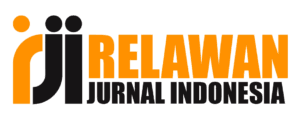Kolonisasi Makrozoobentos pada Kolam Habitat Semi Ex Situ (HSE) di Kawasan Maninjau, Sumatera Barat
DOI:
https://doi.org/10.31851/sainmatika.v17i1.3285Keywords:
abundance, benthic macroinvertebrates, diversity, HSE pond, Maninjau areaAbstract
Semi Ex-Situ Habitat (HSE) Pond is a pond that is designed for spawning native fish in Lake Maninjau, particularly in Bada fish (Rasbora argyrotaenia) in semi ex situ condition. This study aims to determine the benthic macroinvertebrates colonization in HSE ponds. The source of the water came from Lake Maninjau and the springs nearby. The study was conducted in August, October, and November 2018. Benthic macroinvertebrates samples were taken from some artificial substrate stainless steel- wire mesh (the size are 20 cm x 20 cm, mesh size 30), which was placed at the bottom of the ponds for 20—30 days. The result shows that there are five classes of benthic macroinvertebrates in an HSE pond with the water springs and HSE pond with the water of Lake Maninjau. Chironomidae was the most abundant Family in both the springs-HSE pond and the lake Maninjau-HSE pond. The abundance of benthic macroinvertebrates in these two ponds respectively, are 2207 individuals/m2 and 4138 individuals/m2. The Shanon-Wiener diversity index value is low, they are 0,38 in the springs-HSE pond and 0,29 in the lake Maninjau-HSE pond. The Bray Curtis similarity index values in those two HSE Ponds ranged from 47% to 63%, furthermore its categories from “not similar to similarâ€.
References
Armitage, P.D. (1995). Chironomidae as food. In P. D. Armitage, P. S. Cranston,& L.C.V. Pinder (Ed.),The Chironomidae: Biology and Ecology of Non-Biting Midges. London: Chapman & Hall.
Asyari. (2006). Peran Serangga Air Bagi Ikan Air Tawar. BAWAL, 1(2), 12–19.
Barman, A.&Baruah, B. K. (2015). Macrophyte Preference and Aquatic Entomofaunal Diversity of Kapla Beel, A Fresh Water Wetland of Barpeta District of Assam, India. Asian Journal of Science And Technology,6 (03), 1205–1210.
Broyer J. & Curtet, L. (2010). The Influence of Macrophyte Beds on Duck Breeding in Fishponds of The Dombes Region, France. Wildfowl,60, 136–149.
Della Bella, V., Bazzanti, M.,& Chiarotti, F. (2005). Macroinvertebrate Diversity and Conservation Status of Mediterranean Ponds in Italy: Water Permanence and Mesohabitat Influence. Aquatic Conservation: Marine and Freshwater Ecosystems,15, 583–600.
Edia, Oi Edia. (2013). Spatial and Circadian Variation of Aquatic Insect Communities in Three Tropical Fish Ponds (Natiokobadara, Korhogo, Northern Côte d’Ivoire). International Journal of Biosciences, 3(8), 22–30.
Effendi. (2003). Telaah Kualitas Air Bagi Pengelolaan Sumber Daya dan Lingkungan Perairan. Yogyakarta : Kanisius.
Hawkes, H. A. (1979). Invertebrates as Indicator of River Water Quality. In A. James & L. Evison (Ed.),Biological Indicators of Water Quality. New York : John Wiley & Sons.
Klemm, D. J. (1995).Identification Guide to The Freshwater Leeches (Annelida:Hirudinea) of Forida and other Southern States. Florida : Department of Environmental Protection.
Krebs, C.J. (1978). Ecology: The Experimental Analysis of Distribution and Abundance. New York: Harper & Row Publisher.
Lee, C. D., Wang, S. B., & Kuo, C. L.(1978). Benthic Macroinvertebrates and Fish as Indicators to Water Quality with Reference to Community Diversity Index. InE. A. R. Guano, B. N. Lokani,&M. C. Thank(Ed.),Water Pollution Control in Development Countries. Thailand.
Loke, L. H. L., Clews E., Low E-wen, Belle, C. C., Todd, P. A., Eikaas H. S., &Ng, P. K. L. (2010). Methods for Sampling Benthic Macroinvertebrates in Tropical Lentic Systems. Aquat Biol,10, 119–130.
Lukman. (2017). Perkembangan Pemanfaatan dan Penelitian Ikan Bada (Rasbora argyrotaenia) di Danau Maninjau. Warta Iktiologi, 1(1), 2427.
Mason, C. F. (1981). Biology of Freshwater Pollution. New York: Longman.
Michael, P.(1994). Metode Ekologi untuk Penyelidikan Ladang dan Laboratorium. Jakarta : UI Press.
Milner, A. M. (1994). Colonization and Succession of Invertebrate Communities in A New Stream in Glacier Bay National Park, Alaska. Freshwater Biology,32, 387–400.
Odum, E. P. (1996). Dasar-Dasar Ekologi. Edisi Ketiga. Yogyakarta : Gajah Mada University Press.
Orwa, P.O., Omondi, R.,&Chemoiwa, E. J. (2018). Colonization Patterns of Benthic Macroinvertebrates in Fertilized and Non-Fertilized Earthen Fish Ponds. Int J Aquac Fish Sci, 4 (3), 022–026.
Pescod, N. B. (1973). Investigation of Rational Effluent and Stream for Tropical Countries. Bangkok : AIT.
Purwati, S. U. (2015). Karakteristik Bioindikator Cisadane : Kajian Pemanfaatan Makrobentik Untuk Menilai Kualitas Sungai Cisadane. Ecolab,9 (2),47–104.
ReznÃcková, P.,Petrovajová, V., Nerudová, J., HadaÅ¡ová, L., & Kopp, R.(2016). The Colonization of Newly Built Fishponds by The Macroinvertebrate Assemblages. Acta Universitatis Agriculturae Et Silviculturae Mendelianae Brunensis,64 (16).
Soro, N., Camara, I. A., Edia, E. Oi., &Diomand, D.(2018).Fishpond Colonization by Aquatic Macroinvertebrates: Case of Blondey (Côte d’Ivoire; West Africa). International Journal of Entomology Research, 3(6), 34–41.
Sulastri,Hartoto, D. I., Yuniarti, I.,& Nasution, S. H.(2011).Karakteristik Habitat, Kebiasaan Makan, dan Sistem Konservasi Ikan BadaRasbora argyrotaenia di Danau Maninjau. InProsiding Seminar Nasional Ikan VI, Masyarakat Iktiologi Indonesia (pp. 487–497).
Sulistiyarto, B. (2015). Pengukuran Keanekaragaman Makrozoobenthos di Perairan Dataran Banjir Sungai Rungan Kalimantan Tengah Menggunakan Substrat Buatan dari Ijuk. Jurnal Ilmu Hewani Tropika, 4 (2).
Sulistiyarto, B.& Christiana, I.(2015). Colonization by Bloodworms (Chironomidae Larvae) using Artificial Substrates in Floodplain Waters: Effect of Exposure Periods and Season. International Journal of Aquatic Science, 6(2), 39–47.
Tronstad, L. M.,Tronstad, B. P.,& Benke, A. C.(2007). Aerial Colonization and Growth: Rapid Invertebrate Responses to Temporary Aquatic Habitats in A River floodplain. J. N. Am. Benthol. Soc., 26(3), 460–471.
Yule, C.M. &Sen, Y. H. (2004). Freshwater Invertebrates of The MalaysianRegion. Kuala lumpur : Academy of Science Malaysia.








